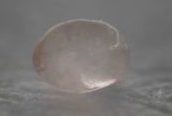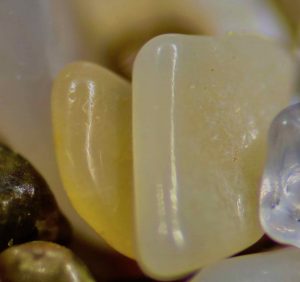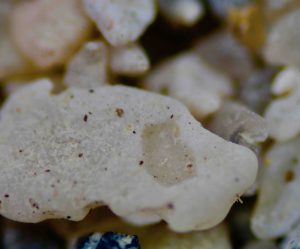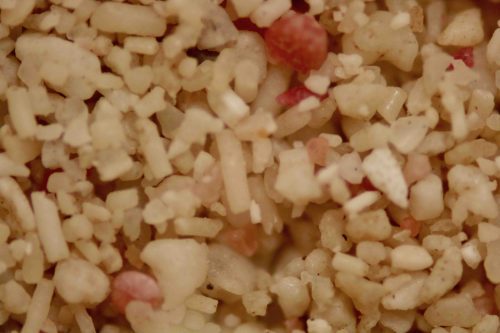Today’s poster sessions starting at 4 p.m. will full of mysterious images. This is your opportunity to ask the researchers what the pictures are all about.
In the case of Morristown-Beard School sophomore Kim Magnotta’s poster (103) today, the question may be simply, what are pictures of sand doing at a meteorology conference?
There’s a good reason, of course, so go ahead and ask.

Magnotta jumped into microphotography hoping to capture images of snowflakes falling on Northern New Jersey. Starting her work during summer vacation, finding snow was difficult. Collecting samples from the Jersey Shore, she started photographing sand. It was also much easier perfecting her technique using subjects that did not melt. The first example shown above is primarily quartz and feldspar from Sandy Hook, NJ, including several uniquely large grains.

Focusing on individual sand grains, Kim was fascinated by the variety that exists in this world. She began to send out requests for sand from around the world. Added to her personal samples from Sandy Hook, NJ, were sand from Florida, New Zealand, the Dominican Republic, and other exotic locations. Kim was greatly encouraged by the support she received.
The variety of sand was instructive: New Zealand sand, for example, the second sample above, was from Rings Beach. It was notably glassy, with yellows, purples, and pinks. The next sample below, from Venice, Florida’s prime location on the Gulf Coast, is quartz mingled with fragments of fossils and crushed shells.

Throughout this process, Kim has been creatively reactive to her changing situation. As she presents in the poster session of the Symposium on Education, this has ultimately been an exercise in experimental design and development. Kim has learned how to adapt when the original plans did not work out and begun to network with a larger community.
She says,
At beginning of the sand and snowflake study, I hoped to obtain a few clear pictures of individual sand grains and snowflakes. Shortly after the study began, I became interested in learning about the different minerals that compose sand.
Currently, I have taken over 200 pictures of sand grains from over 35 different locations. This project has blossomed from a hobby into a passion.
Continuing her work, Kim would love for people to come see her at her poster to share ideas about how best to analyze the sand she has collected and to consult about techniques to catch and photograph snowflakes.
Another good reason to spend time wondering at the pictures in the poster conference. One final incentive, a biogenic sand sample from the Dominican Republic, where pink hues set it apart from U.S. East Coast sand.
